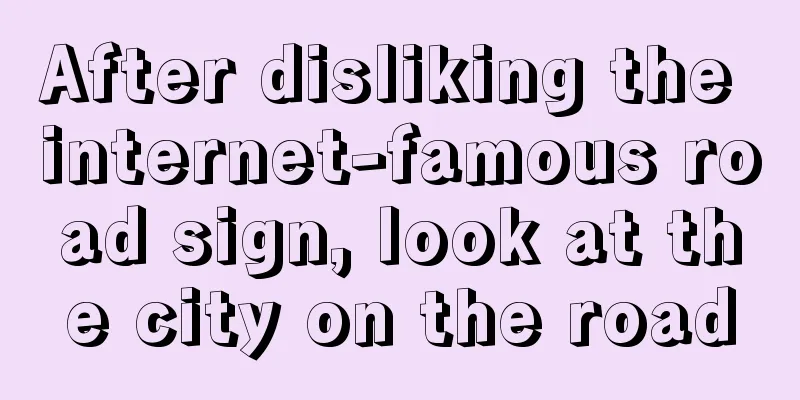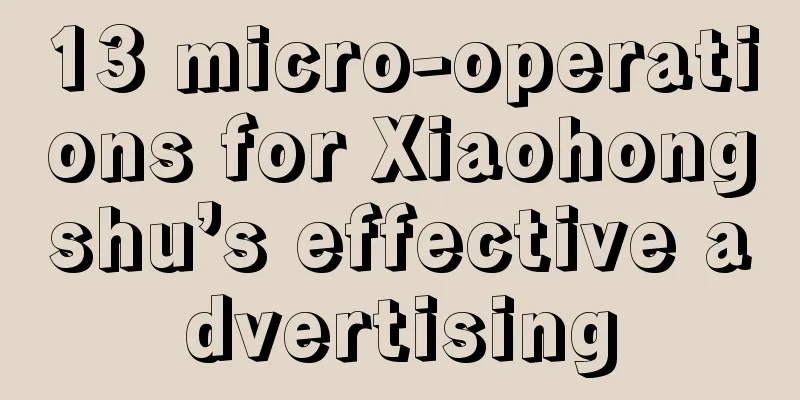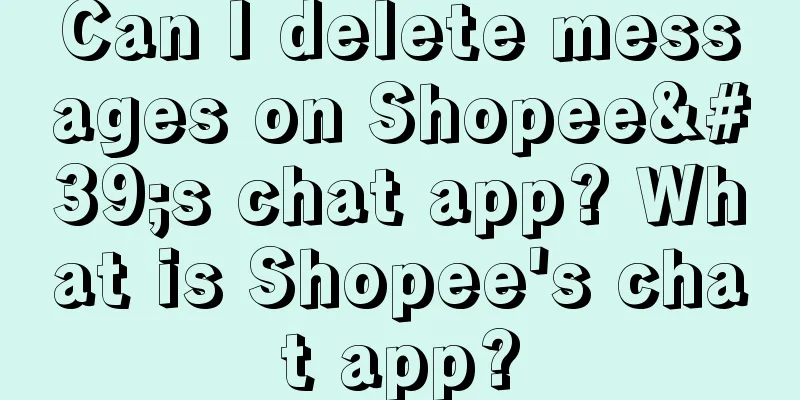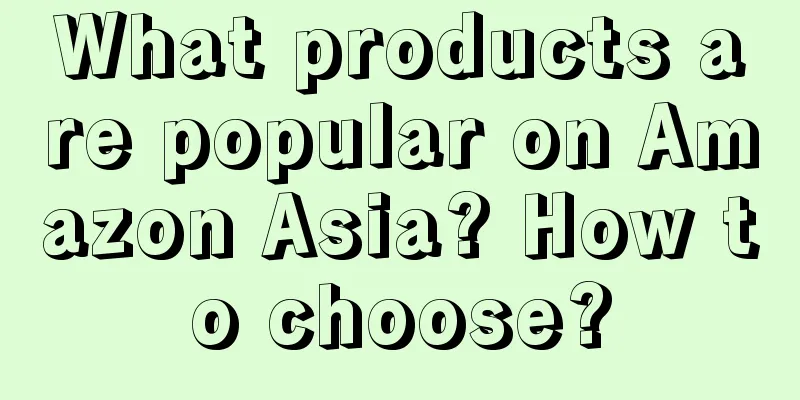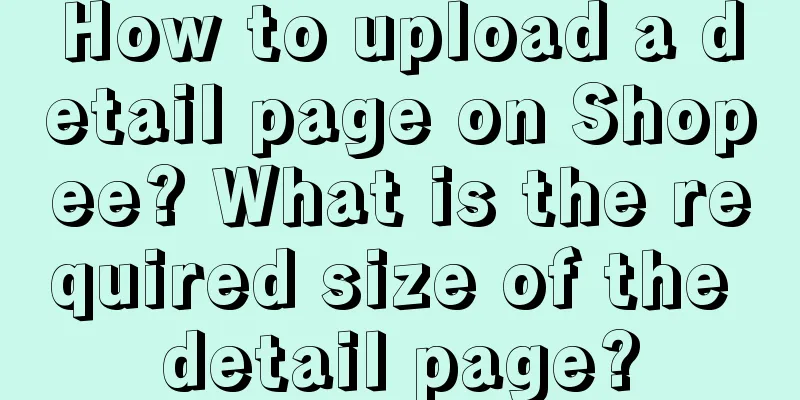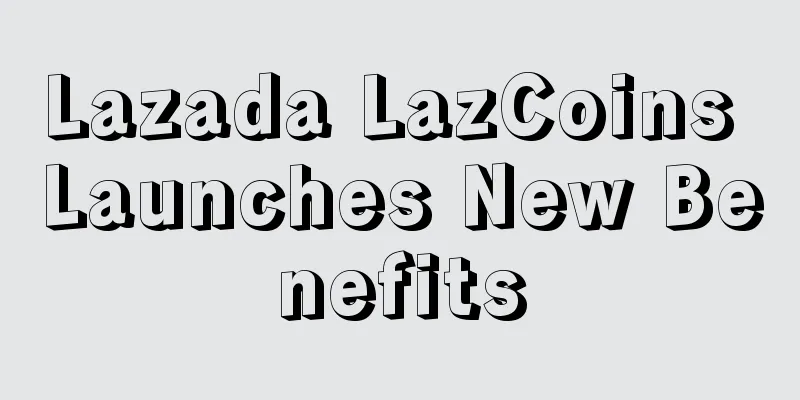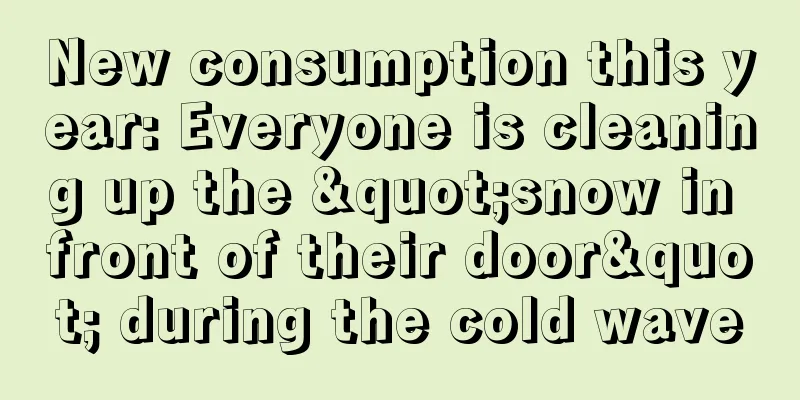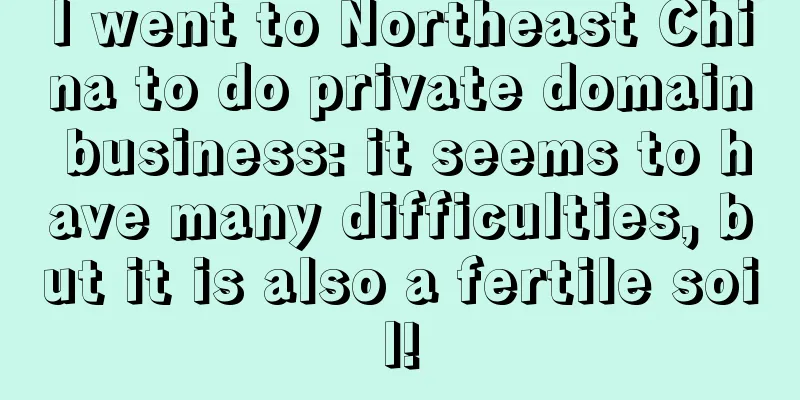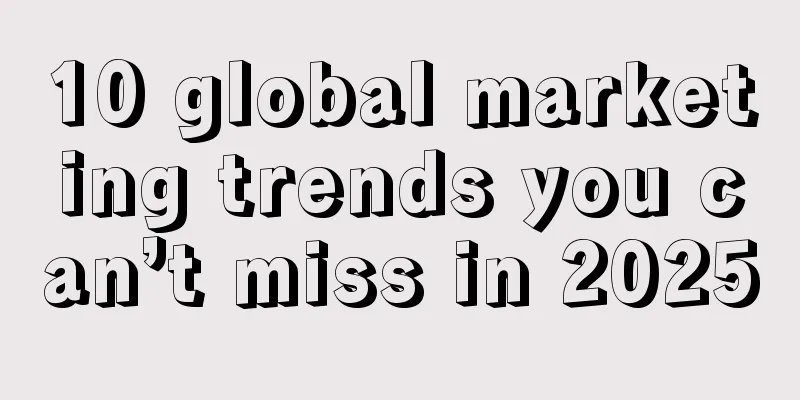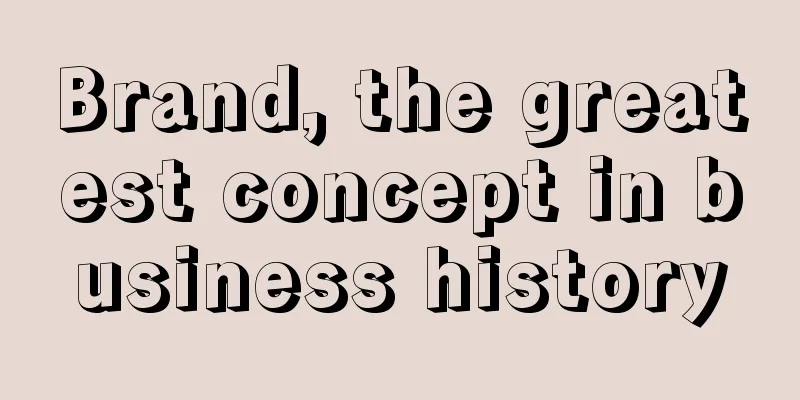Brand No. 1: Competitive slogans (2 pieces, 3 clear, 5 sets)
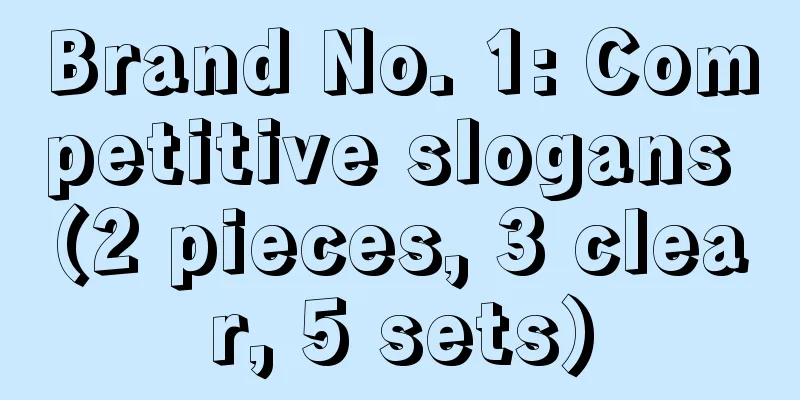
1.2 Principles1. Principle 1The language should bring out the sense of picture, and the picture should form a visual hammer Here, language comes first, and vision comes second. The role of language is to mobilize cognition, and the premise of mobilizing cognition is that language must have the "innate" ability to mobilize cognition. That is, to discover consumers' memories of the category and choose to describe it in concrete language, and then present the picture. A vision that cannot be described in words and a language that cannot be expressed in images are both bad. The essence of marketing is to reduce the cost of communication. The key to reducing the cost of communication is to reduce the cost of communication at the beginning of design, and to try to draw an equal sign in the conversion of language and vision at the beginning of design. The problem is that in the actual operation process, the production of language and vision is often divided. On the one hand, there is a division between the marketing department and the design department within the enterprise. On the one hand, there is a split between the enterprise and the external design company. What was originally one thing has become two things, two departments’ affairs, or even two enterprises’ affairs. Therefore, from the perspective of reducing communication costs, marketing should be the responsibility of the top leader of the enterprise, and the problem should be solved at the source, with both strategy and tactics on the shoulders. How can the channel be so clear? Only the source of fresh water can bring it. 2. Principle 2Symbols are not only annotations to language, but also blessings to language. First, we need to annotate the language, and then strengthen the language. This is what we call the language nail and the visual hammer complementing each other in positioning. The basic guarantee of the complementarity is the working method, two in one; all in one. There is no problem of pre-production of marketing language and post-production of image vision here, but "co-production". Language and vision are one thing, one thing, not two things, let alone one before and after. Marketing slogans are the first move, and visual images are the second move. Because language can be passed on by word of mouth, marketing not only needs to solve the problem of who will buy, but also who will say and what to say. Therefore, slogans come first. Su Yu said: "Every time we fight a battle, we must first study the slogan. The slogan is the first priority, and fighting is incidental. If the slogan is shouted well, we will win many battles - we attacked Menglianggu and captured Zhang Lingfu alive; we fought to Jinan Prefecture and captured Wang Yaowu alive . " As for visual images, they must first be expressible, not just expressible. Such visual images become art and showmanship. Marketing is not art. Marketing must first solve the problems of selling, shipping, and moving goods. Therefore, language should be the first nail, and visual images should be the second. Or it is better to combine the two and complement each other. If the language nail is weak, you must first think about the language and organize the language well - what are you, how are you different, and how do you know it ? This is the key to the problem. These three questions are like Drucker's classic three questions: what is your business, what will your business be, and what should your business be. Drucker's three questions are three questions within the company, while the core of the language nail is the three questions outside the company, especially the three questions facing consumers. What are you (category affiliation), how are you different (characteristic occupation), and how do you know it (credibility). Viagra not only occupies the color blue, but also has an awesome language nail - Viagra. This makes the blue little pill, Viagra, the absolute leader in its category. It is a good thing for a brand to have a product with a nickname, which will give the product many opportunities for free publicity, such as the deadly big Wusu for Wusu and the little black notebook for ThinkPad. 2.2 Differences1. The four elements of advertising slogans: voice, text, sound and music(1) Emotional: To achieve great things, fate is necessary. (2) Unique value proposition: Robust 27-layer purification (3) Language Pin: Guazi.com, Direct Car.com The core of advertising slogans is to convey effective brand information, which is about brand positioning. Emotional and unique value propositions are not bad, but they are wrong. Marketing seems to be a job that can be done with just a mouth. In fact, there is no such thing as good or bad, only whether or not. Laymen watch the excitement to see whether it is good, while experts watch the door to see whether it is right or wrong. Guo Degang said: In the crosstalk business, there is no one who is better than anyone else, there are only those who can and those who can’t, and the same is true in the marketing business . In addition to slogans (text, sound), there must also be visuals. Whether it is a poster, a doorhead, or a media advertisement, only text and sound are not enough, and visual enhancement is essential - a gentleman will do everything he can to achieve the highest good and beauty. That is: the presentation of text, the expression of sound, and the enhancement of vision are all indispensable. Here are the four parts of the advertising slogan: Text, voice, sound, music Words are dead, like a tiger with wings, which moves like a tiger, very fierce and durable. If you want words to have legs (from a tiger to a tiger), and to walk on their own, you need to give them (words, characters) legs of sound and voice, so that the words will be familiar and spread quickly. Voice is a rhythmic sound. A word that cannot be pronounced is a "dead" sound, and has no sound. Repeating words is boring, but with music, it can be repeated 100 times - not boring. 2. Differences and benefitsThe point of difference is what makes you different from others, and it is the real distinction between you and your competitors, while the point of benefit is the benefit that your point of difference brings to consumers. When the two are not consistent, you will find that consumers' perception of the brand is often focused on the point of difference rather than the point of benefit. This is - different is better than better.
Especially in the early stage of the category (early stage of the market), consumers have category awareness but brand awareness is relatively low. This stage is a typical case of communication winning over no communication, USP winning over brand image, and of course, the final outcome is that differentiation wins over no differentiation. For example, Chubang is showing off here, appealing to the two most important points of soy sauce for consumers: "delicious taste" and "natural safety". This USP advertising is effective. Chubang's growth rate in recent years has also been faster than that of the soy sauce brand leader Haitian Soy Sauce, ranking second. The positioning is delicious taste, and the differentiated production process (natural sun-drying for 180 days) is the differentiation slogan of its positioning. This is similar to the "peeled tomatoes for ketchup" made by Trout and Reese in "Positioning". In addition, one of the ten types of differentiation Trout mentioned in his speech in China is "production method". Page 49 of "Two-Hour Brand Literacy" clearly states: "After having brand positioning, USP can also become the most differentiated slogan for communication positioning." In the same period, Haitian was still using the brand image advertisement of "the taste of happiness" in its advertising appeal. It is not difficult to understand that the premise of phased effectiveness is that the opponent is making mistakes. Later, Haitian also began to follow Chubang in its publicity, but did not find an effective advertising appeal point. In the final analysis, it was still because of the lack of understanding of category characteristics, differentiation, and consumer cognition. In any case, you will eventually have to occupy a characteristic, and this characteristic is your point of differentiation. The benefit point is the sense of value you give to customers by occupying the characteristic and creating differences. Haitian vs. Chubang: The soy sauce category is a big market. If you can start with new features of the category, there are still many opportunities. Chubang has the characteristics of freshness and the USP of 180 days. Haitian cannot follow suit, but must go the other way and go around. If it imitates and follows, the result can only strengthen consumers' perception of Chubang, not to mention Chubang's dramatic expression: "Just dry it here for 180 days", which is difficult for Haitian to surpass. For example, Yuanshai. The concept of Yuanshai here is the characteristics extracted from the category and consumer cognition. Focusing on the characteristics of Yuanshai, find the difference and then express the USP dramatically. 3. 3 points to clarify1. Category selection, what to buy?When you go to a coffee shop, you often encounter similar questions: What do you want to drink, tea or coffee? It is obvious that tea and coffee are two different categories (category: a collection of products in the consumer's cognition). When buying mineral water, you think of Nongfu Spring, and when buying cola, you think of Coca-Cola. The brand that occupies the largest share in our minds and can be blurted out becomes a strong brand in the category. When there are no strong brands in a category, consumers will directly express their needs with the category itself. For example: buy some bananas, eat an apple. When there are strong brands in the category, we may say: buy some Chu Orange to try. Consumers think in terms of categories (what to buy) and express with brands (which one to buy) . Category is the entrance to demand. The meaning of this sentence is that you must learn to use category words to intercept demand, and then say brand = category. 2. Where to buy? Channel brandJD.com, 7-11, and Walmart are essentially different channel brands, representing different channel attributes and having different channel characteristics. Different channel attributes mean that the people who buy things on the channel are different, which in turn forms the unique characteristics of the channel - the channel is the person, and the person is the channel. JD.com (e-commerce), 7-11 (convenience store), and Walmart (supermarket). The choice of channel brand is to answer the question of who the customer is and where the customer buys. Of course, we can also use the logic of people, goods, and places to look at it. For example, to buy home appliances, go to JD.com VS Tmall. That’s enough. We are more familiar with product brands, and often ignore the value of channel brands. Strong channel brands will become the entrance of traffic, and then use traffic to lead manufacturers. What channel you choose to enter is essentially because of the people behind the channel. Four Channel Focuses
3. Which one to buy? Product/BrandWe are familiar with product brands, such as Nike vs. Adidas, Mengniu vs. Yili. If you understand what to buy and where to buy, you may know why product brands are not simple brand names (that is just a trademark) but represent categories or occupy characteristics, thus becoming the first choice of customers in the competition. For example, for cheese, choose Meike Landou vs. Meifei, 0 sugar cheese sticks. 4. 1 FormulaSelecting ( ) has ( ) functions and satisfies ( ) interests In early markets, where almost all purchasing decisions are made by technology enthusiasts and visionaries, the primary value areas are technology and product - Crossing the Chasm. For example: Lululemon uses LUON patented fabrics and Silvere scent anti-odor technology to achieve softness, comfort and fit. For example: stretching a tight vest to cover part of the buttocks when worn with yoga pants; adding unique designs such as "hidden pockets", "double-sided wear" and "night flash". It not only solves the problem of stretchability of yoga pants during exercise, but also ensures that women will not expose their flesh-colored skin when doing any yoga poses, and avoids the appearance of camel feet through cutting. At the same time, compared with ill-fitting dance clothes, Lululemon's yoga pants highlight women's body lines and hip curves.
5. 5 sets of templatesEvery phenomenon is its essence, 5 classic advertising slogans, 5 advertising slogan routines 1. If you are afraid of getting angry, drink WanglaojiDemand + verb + brand name Even though we emphasize the value of the brand, we still need to be aware that consumers are more concerned about the demand itself and their own unsatisfied state. Therefore, the starting point of an advertising slogan is not the brand, but the demand; not the product, but the pain point, but the foothold must be the brand.
The slogan begins with the state of a certain unmet need of consumers, the middle part is the way to open the product, and the end is the brand name. That is: afraid of getting angry + drink + Wanglaoji. The finishing touch is the description of the need. If the fear of getting angry is changed to getting rid of anger or preventing getting angry, the potential population coverage will be at least 100 times smaller.
Similar ones include:
2. This year, I will not accept any gifts during the Spring Festival. If I do accept any gift, I will only accept Melatonin.Occupy the scene and provide solutions
"Giving gifts" is a typical scenario. When it comes to "giving gifts", people naturally think of festivals, requests, first meetings, friends and relatives, large and small bags, and smiling faces. At this time, there is no need to repeatedly ask about the needs. What consumers need is a reason for choosing and a solution.
In specific scenarios, the needs have become clear. What is needed is a solution, either a product or a service. There are countless specific and specific scenarios in life. Discover the scenarios, occupy the scenarios, and provide solutions - scenarios are the most direct way to awaken needs. Similar ones include:
3. BaiduNouns become verbs, occupying the root Business competition is a battle of categories and characteristic words. The essence of advertising slogans is to occupy category words and characteristic words. All routine forms and creative expressions must conform to the essence of the content. The essence is: occupy the root of the business. Head & Shoulders occupies the root of dandruff removal, Baidu occupies the search, and Didi occupies the travel.
Similar ones include:
4. Yunnan Baiyao Band-Aid, with medicine it heals fasterCompetitive Substitution The first question in business is where do your customers come from? They come from competitors. The purpose of competitive advertising is to convert competitors' consumers to mine. This type of advertising should give consumers clear reasons for conversion, which are functions, benefits, and value points that competitors' products do not have; they are substitutes and replacements for similar products. In the past, people said that the old would not go away before the new would come. Now, the new will not come and the old will not go away - innovation makes sense . Similar ones include:
The earliest advertisement for Cordyceps sinensis claimed: chewing seven cordyceps is not as good as holding one in your mouth. The emphasis is on higher, faster, and stronger. However, the "more" is still competing in one dimension. Changing it to eating it in your mouth makes it the same. Competition in different dimensions is often more efficient. It implies that the competitors' eating methods are old, outdated, and outdated. Now starting to eat it in your mouth, innovation makes sense. 5. Only one kilowatt-hour of electricity is required per nightDramatic expression of function, benefit and craftsmanship Pick out a certain point in the product's raw materials, materials, production, process, and procedures, and magnify it in a dramatic way. The reason for using a dramatic approach is to maximize the signal and attract the attention of consumers. However, this kind of dramatic expression of the product's functions, benefits, and process should be careful. A key question: ultimately it comes down to the characteristics that the product will occupy. For example: just sunbathe here, the core of sunbathing for 180 days is to occupy freshness, rather than just staying at 180 degrees; charge for 5 minutes, talk for 1 hour, the transmission is behind the fast charging; 27 layers of purification, behind it is the purity of pure water. Similar ones include:
Author: Houshan Keju, Source: WeChat public account “Lao Gao Business and Brand”. |
<<: Why is Pangdonglai’s tea so popular?
>>: Can the new rural "top streamer" bring goods?
Recommend
Changing marketing scenarios, unchanged communication models (Part 1)
The author of this article uses several simple cas...
Known as the "female version of Brother Yang", with over 10 million fans in half a year, is the comedy drama account going to have another hit?
This article focuses on how to create a hit with a...
What should I do if my Shopee store traffic suddenly drops? What should I do if there is no traffic when I put my store on the shelves?
Each e-commerce platform is testing the seller'...
How to calculate Amazon exposure rate? What are the influencing factors?
As a cross-border e-commerce platform, Amazon is v...
The total number of online views exceeds 500 million. This generation of young people has a strong sense of stealing
On the Internet, the term "stealing feeling&q...
Some in-depth thoughts on Xiaohongshu
Now more and more people are starting to use Xiaoh...
What are the most frequently-watched data for Pinduoduo?
In the world of e-commerce, data is king. From bas...
How to turn off cash on delivery on Lazada? FAQ
Many novice merchants who have just settled in the...
How are Amazon product ratings calculated?
Amazon product ratings are one of the most importa...
Necessary understanding: Boss, it’s not that I can’t do it, it’s that we consumers are not ready
Brand marketing often faces a problem: Why can oth...
The UP host with 1.9 million followers, is he really going to "flee to the ends of the earth" this time?
From the peak of honor to the trough of being bann...
How to change real name on Shopee? How to operate a store?
To open a store on an e-commerce platform, real-na...
Do I need a business license to open a cross-border e-commerce store? How do I apply for one?
Cross-border e-commerce can be said to be the hott...
The secret to 5 successful startups is to use product thinking for marketing
What kind of marketing methodology does Du Guoying...
Ten thousand words long article: How B-side Internet products can acquire customers through multiple channels
It is much more difficult to acquire customers on ...
